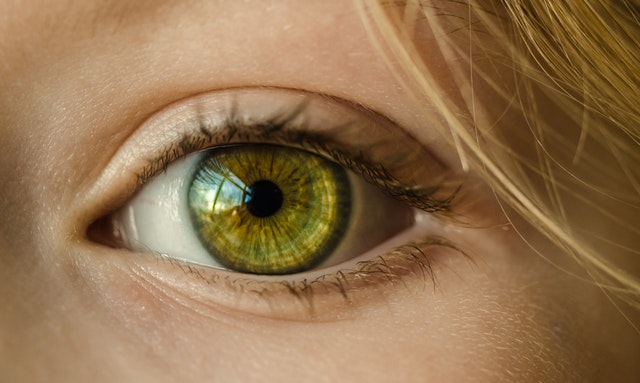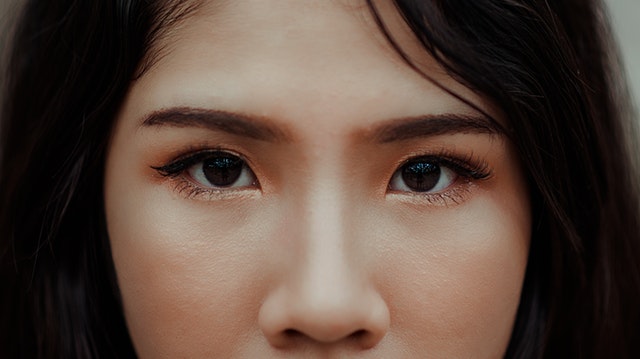
Image Source: Pexels
Maybe you enjoy perfect 20/20 vision now or maybe you have to wear contacts or eyeglasses. But did you know that even if you take great care of your eyes you could be at risk for age-related macular degeneration?
Age-related macular degeneration is the leading cause of blindness in the world. If you have a loved one with this syndrome, you understand how heartbreaking it can be to watch them lose their eyesight. It can be terrifying too. Are you next? (See also: Are Yearly Eye Exams Really Needed?)
What Is Macular Degeneration?
Macular degeneration is the leading cause of irreversible and severe vision loss in people over 60 years of age. It can happen when the small central part of your retina, known as the macula, starts to deteriorate.
Your retina is the light-sensing nerve tissue located at the back of your eye. Since it typically occurs in older adults, it is often referred to as age-related macular degeneration. There are two main types of this condition, including:
Dry Form
The dry form of age-related is characterized by yellow deposits, referred to as drusen, in the macula. A few of these deposits may not affect your vision, but as they grow in size, however, they may lead to the distortion or dimming of eyesight that people can find noticeable when they read a book or magazine.
In the more advanced stages of this condition, there can be a thinning of the light-sensitive layer of cells in the macula which can lead to tissue death or atrophy. In this stage, sufferers may experience blind spots in the center of their vision. In more advanced stages, patients may lose their central vision.
Wet Form
The wet form of age-related macular degeneration is when the growth of abnormal blood vessels from the choroid forms underneath the macula.
These blood vessels can leak blood and other fluid into your retina, causing the distortion of your vision that makes straight lines appear to be wavy, as well as blind spots and the loss of your central vision. These blood vessels and the bleeding can eventually form scar tissue, leading to permanent loss of central vision.
Who is Affected?
Many patients with age-related macular degeneration have the dry form of the condition and can lose some form of central vision. However, the dry form of age-related macular degeneration can eventually lead to the wet form. Only about 10 percent of patients develop the wet form, but they make up the majority of those who experience serious vision loss or even blindness from the disease.
It’s critical for people with age-related macular degeneration to monitor their eyesight regularly and to visit their eye care professional.
Risk Factors
- Smoking – Current smokers have a two-to-three time higher risk for developing age-related macular degeneration than people who have never smoked.
- Artificial fats – Typically labeled “partially-hydrogenated vegetable oils,” these artificial fats are pervasive fats in food, typically found in low-fat baked goods. These foods contain artificial fats or lab-produced chemicals. These chemicals are not food and your body cannot metabolize them properly.
- Sunlight – The sun’s blue wavelengths can damage your macula, not UV rays.
- Obesity – Being overweight doubles your risk of developing age-related macular degeneration.
- A diet high in processed, packaged foods and low in fresh vegetables – Vegetable oils are added to processed foods. The omega-6 fatty acids found in these foods can contribute to inflammation and age-related macular degeneration.
- Advanced age – People over 60 years of age are at greater risk for developing age-related macular degeneration. A study showed that people in middle age have a two percent risk of getting the condition and people over 75 have a 30 percent chance.
- Race – Age-related macular degeneration is more prominent in African Americans.
Age-Related Macular Degeneration Signs and Symptoms

Image Source: Pexels
In its initial stages, this condition may not have any signs and may go undiagnosed until it progresses or affects both of your eyes. The first symptoms are typically blurred vision with a dim, blurry spot in the middle of your vision. This spot can get darker and bigger over time.
Symptoms of age-related macular degeneration can include:
- Dark, blurry areas in the center of your vision
- Diminished or changed color perception
If you experience any of these symptoms, contact your eye specialists as soon as possible.
How is Age-Related Macular Degeneration Diagnosed?

Image Source: Pexels
A comprehensive dilated eye exam can detect age-related macular degeneration. The exam may include:
- Visual Acuity Test – The eye chart measures how well you see at distances.
- Dilated Eye Exam – Drops are placed in your eyes to widen or dilate the pupils. This provides a better view of the back of your eye.
- Amsler Grid – Changes in your vision may cause lines on the grid to appear wavy or disappear.
- Fluorescein Angiogram – During this test, which is conducted by an ophthalmologist, a fluorescent dye is injected into your arm. As the dye passes through your blood vessels and into your eye, pictures are taken.
- Optical Coherence Tomography – Similar to an ultrasound, OCTs create high-resolution images of any tissues that can be penetrated by light.
How to Help Prevent Age-Related Macular Degeneration
To decrease the risk of developing age-related macular degeneration, or to decrease the rate of progression if you already have it, here are some actions to take:
- Do not smoke.
- Don’t eat packaged and processed foods as much as possible.
- Do wear sunglasses, preferably with brown, orange, or amber tints that block out the sun’s blue light.
- Do consume a lot of dark green leafy vegetables.
- Do eat a lot of omega-3 fatty acids, found in fish oil, fish, nuts, and flaxseeds.
- Do control your cholesterol and blood pressure levels.
- Do exercise daily to keep your weight down.
While age-related macular degeneration is sometimes uncontrollable, it is good to be aware of the signs and symptoms and to see an eye specialist.
Maybe you enjoy perfect 20/20 vision now or maybe you have to wear contacts or eyeglasses. But did you know that even if you take great care of your eyes you could be at risk for age-related macular degeneration?
Age-related macular degeneration is the leading cause of blindness in the world. If you have a loved one with this syndrome, you understand how heartbreaking it can be to watch them lose their eyesight. It can be terrifying too. Are you next?
About The Author:
Kim is a writer by profession. She mostly writes about self-care and how to maintain a good and healthy life. Apart from being a fantastic writer she also loves painting and has executed a few exhibitions to display her creativity.




